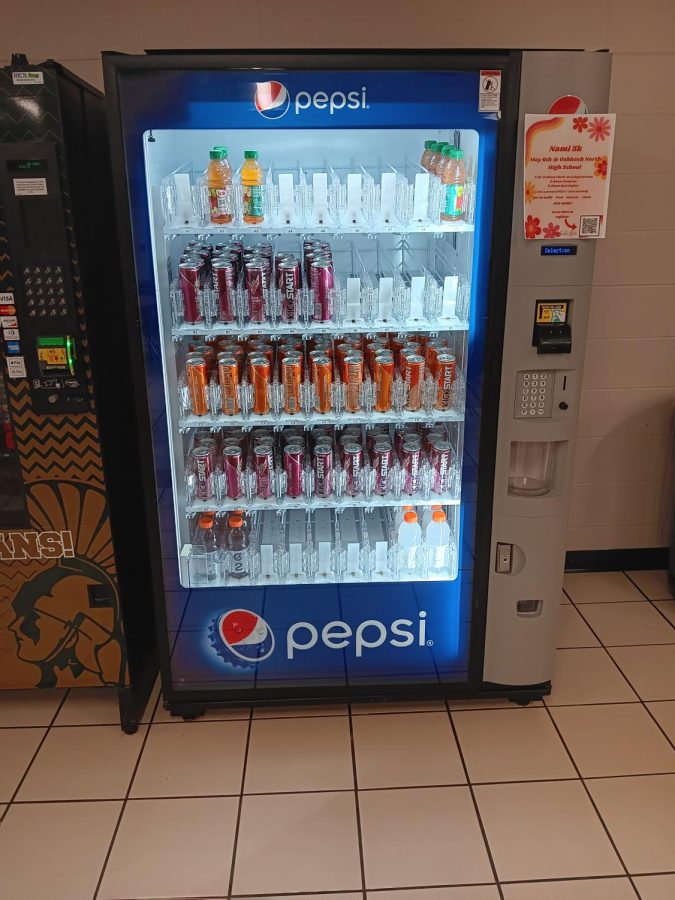The effect of energy drinks on high school students
April 13, 2023
If an individual were to observe a high school setting, they would notice that many of the students carry and have energy drinks during class. Not only would they see that the students have the energy drinks, but that schools also provide them as an option for students to buy. The most well known energy drinks that are around the schools are Monsters, Kickstarts, and Rockstars. Students are able to purchase these drinks with their own money through places such as the a la carte line, the snack shack and the vending machine.
The nutritional standards should be changed to consider the effects of the content within the beverages that are attempting to make their way into school a la carte’s. These standards were created under the Healthy, Hungry Free Kids Act of 2010(HHFKA). It should be noted that the National School Lunch Program was created in 1946 in order to oversee children’s nutrition and carry out the standards made for the Lunch Program. However, according to How a Public Health Goal Became a National Law: The Healthy, Hunger-Free Kids Act of 2010, written by Colin Schwartz, MPP and Margo G. Wootan, DSc, states that “The Healthy, Hunger-Free Kids Act of 2010 is the 2010 CNR legislation. While Congress did not pass a 2015 CNR, HHFKA continues in effect today.” A CNR stands for ‘Child Nutrition Reauthorization’ which is presented in Congress every five years in order to create an update to the standards based on current circumstances and not those of the past. The quote mentions that the HHFKA created in 2010 still reflects the circumstances of school lunches in 2010 and not of the present. The circumstances are outlined in the Smart Snacks, which is the specifics of the nutritional standards for the HHFKA, which also outlines other aspects regarding lunches in schools. The standards are heavily focused on the amount of calories within the beverages and their sizes.
Energy drink consumption has increased within the recent years as many students at the high school level started to drink them. They have been so popular that even the school’s Snack Shack provides them as an option to be purchased during passing time. This is also due to the false advertising that the energy drinks provide with their sugar free alternatives to their regular flavored drinks. This can be seen as the loophole that has allowed for these drinks to be able to make their way into the schools. It also relates back to the Smart Snacks part of the HHFKA, where calories are counted instead of considering the content within the beverage. However, regarding the caffeine content found inside of these drinks, the Smart Snacks guidelines state that they don’t restrict caffeine being provided in schools. This has then become up to the management of the school to decide whether or not to encourage the sale of energy drinks to students. The United States Department of Agriculture(USDA) states that it would update the guidelines in the future – however, as mentioned previously, the same HHFKA has been in effect since 2010, and its CNR expired in 2015 without an update in recent years.
One of the issues with the energy drinks is their caffeine content. The CDC is in agreement with the American Academy of Pediatrics with the idea that, “caffeine and other stimulant substances contained in energy drinks have no place in the diet of children and adolescents.” Despite the American Academy of Pediatrics recommending that teenagers should not drink energy drinks, many still do regardless of the warnings. Though, if given an amount that teens should be able to consume, the recommendation from Kidshealth.org would be to keep the caffeine content under 100mg. Monsters and Rockstars do not meet this requirement, but instead they exceed the recommended amount. One can of Monster or Rockstar contains two servings which can total to up to 160mg of caffeine content. The issue with this is that schools don’t regulate how many of the energy drinks that students are able to purchase. Some students can be seen drinking at least one to two monsters a day. However, the negative effects can impact students by keeping them awake at night instead of allowing them to go to sleep.
Energy drinks are a contributing factor to insomnia in teens. This is due to the fact that the time that you drink the energy drinks will affect the ability of your brain to fall asleep at night. Kidshealth.org states that “during the teen years, the body’s internal sleep clock is reset to fall asleep later at night and wake up later in the morning. This change happens because teen brains make the sleep hormone melatonin later at night than kids’ and adults’ brains do.” It is known that caffeine aids in the ability to stay awake when tired, which is why most individuals drink coffee in the early morning. However, teens can be seen drinking energy drinks throughout the day, which affects their internal sleep schedule. This is because caffeine stays in an individual’s system for long periods of time to keep them awake. However, energy drinks should also be held accountable for teenager’s inability to sleep, as some may abuse the use of energy drinks to pull all-nighters instead of getting the sleep that they need.
Though the inability to sleep is a side effect of energy drinks, there are more serious side effects that teenagers may not be aware of. The CDC states that the dangers of energy drinks are “dehydration, heart complications through the symptoms of irregular heartbeat, and heart failure, anxiety and insomnia.” Dehydration may occur in teenagers more frequently because some will substitute energy drinks for water or may not even drink water at all. Though heart complications can arise from excessive consumption of energy drinks, heart failure occurs in serious long term effects that stem from irregular heart rhythms that have had no action taken to manage them. Teenagers are often unaware or dismissive of these side effects because they don’t believe that they could apply to their own lives, however, multiple energy drinks a day or even a week can negatively affect the nervous system and cause serious consequences.
Many teenagers may ignore the warnings of these energy drinks, but adults can help aid in the attempt to educate students about the dangers of energy drinks. Not only could teachers help with this, but school district administrators could stop the sale of energy drinks by placing regulations on the vending machines or the a la carte sale. The CDC and American Academy of Pediatrics both agree that energy drinks should not be in a teenager’s diet. Parents could also work with school district administrations to change guidelines to prevent the sale of energy drinks in schools.


